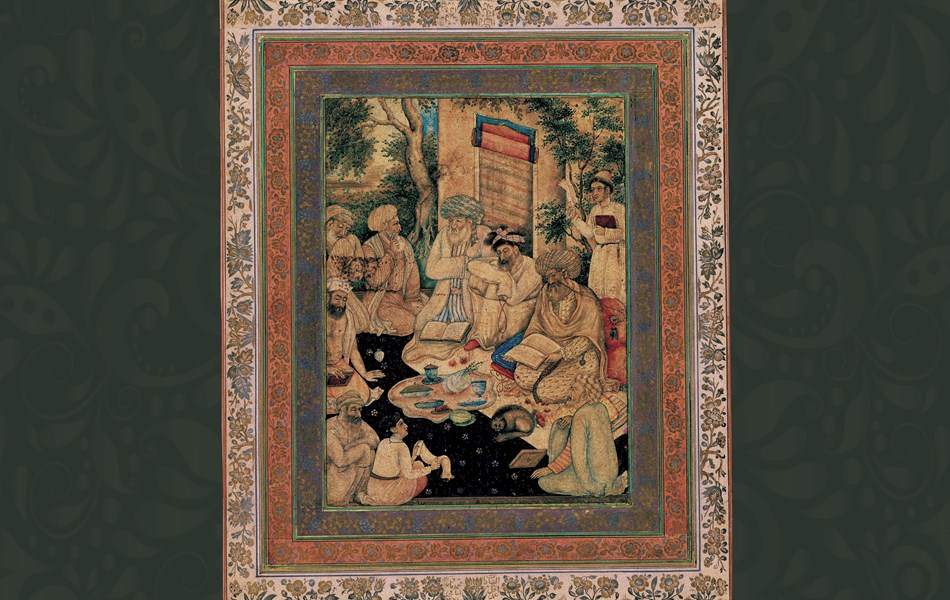Introduction
The 15th century marked the renaissance of the Ismaili and Twelver Shiʿi traditions after centuries of marginalization. It was with the commencement of the imamate of Mustanṣir biʾllāh II around 868/1463– 1464, that the Anjudān revival of the Nizārī Ismailis began. Around the same time, several Shiʿi messianic movements emerged in Iran and spread to the neighbouring countries. One of these, the Safavids, became particularly successful: in 1500, led by the youthful Ismāʿīl I, the Safavid forces defeated the army of the Aq Qoyunlu, and a year later, in the summer of 1501, took their capital Tabriz, thus establishing the Safavid state which then became an empire and the first major Shiʿi power since the fall of the Fatimids in 1171. However, the complexities of the roles of different groups, movements and currents of thought in the complicated process which can be described as ‘the Renaissance of Shiʿi Islam in the 15th and 17th centuries’ remain unexplored. The aim of this conference is to investigate and evaluate these contributions, taking into account the most recent scholarship in the field. In particular, we intend to address the following subjects:
- What were the common characteristics of Shiʿi messianic movements active in the 15th–17th centuries?
- Why was one of them, the Safavids or Qizilbashīs, particularly successful?
- What was the substance of the Anjudān revival of the Nizārī Ismailis?
- Which developments of kalām and Sufism in this era can be described as the ‘Shiʿitisation of Sunnism’?
- How did the School of Isfahan emerge? What were its principal manifestations in different fields of knowledge?
- How did the Ismailis interact with Twelver Shiʿism and Sufism?
- What were the defining characteristics of Shiʿi exegesis, theology, law and gnosis during this period?
Keynote Speakers

Dr Farhad Daftary
Co-Director and Head of the Department of Academic Research and Publications
An authority in Shi'i studies, with special reference to its Ismaili tradition, Dr. Daftary has published and lectured widely in these fields of Islamic studies. In 2011 a Festschrift entitled Fortresses of the Intellect was produced to honour Dr. Daftary by a number of his colleagues and peers.

Professor Gerhard Bowering (Yale)
Gerhard Böwering is a Professor of Islamic Studies. His books include Mystical Vision of Existence in Classical Islam (1980), Sulami’s Minor Qur’an Commentary (Ziyadat haq’iq al-tafsir, 1995), Islam and Christianity: the Inner Dynamics of Two Cultures of Belief (2007), Sulami’s Sufi Treatises (Rasa’il sufiya, 2009) and Sulami’s Sufi Inquiries (Masa’il sufiya, 2010), Negah-e ‘Erfani be-vojud (2010), Islamic Political Thought: An Introdcution, Princeton University Press: Princeton 2015, The Princeton Encyclopedia of Islamic Political Thought (PEIPT), Princeton University Press, Princeton 2013, The Comfort of the Mystics: A Handbook and Anthology of Sufism (critical Arabic text edition and analysis, of Salwat al-‘ārifīn, co-authored with Bilal Orfali); Brill, Leiden 2012, as well as numerous articles, including those in the Encyclopaedia of Islam, the Encyclopedia of the Qur’an, and the Encyclopaedia Iranica.

Professor Hermann Landolt
His publications include Correspondence spirituelle echangee entre Nuroddin Esfarayeni (ob. 717/1317) et son disciple 'Ala'oddawleh Semnani (ob. 736/1336) (1972), Nuruddin Abdurrahman Isfarayini: Le R vlateur des mysteres (1980; 2nd ed. 1986; 3rd ed. 2005),the edition of Henry Corbin's Cyclical Time and Ismaili Gnosis (Kegan Paul International and Islamic Publications Ltd., 1983, as well as numerous articles in various languages including a selection republished as Recherches en spiritualité iranienne (2006).
He is preparing a book on the ishraqi philosopher Suhrawardi, and several other publications including a new edition and translation of the Ismaili thinker Sijistani's Kashf al-mahjub and contributions to the forthcoming Grundriss der Geschichte der Philosophi:. Philosophie in der Islamischen Welt.

